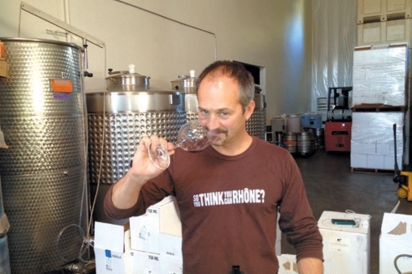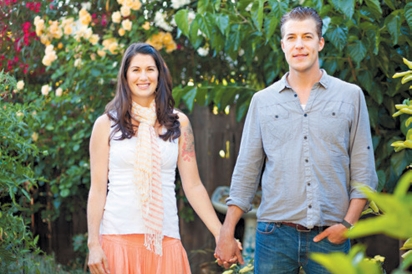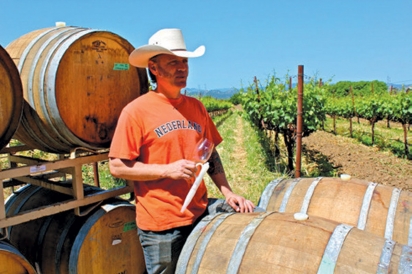The 7% Solution
Of the more than 3 million tons of wine grapes grown in California each year, 93% come from only eight major varietals: Cabernet Franc, Cabernet Sauvignon, Chardonnay, Merlot, Pinot Noir, Sauvignon Blanc, Syrah and Zinfandel.
The remaining 7% includes lesser-known varieties such as Arneis, Grenache Blanc, Malvasia, Ribolla Gialla, St. Laurent, Tocai Friulano, Trousseau Gris, Verdelho, Vermentino and others.
These “other” varietals are, however, finding their way into the hands and hearts of a growing number of Napa and Sonoma winemakers looking to craft distinctive American wines by identifying California’s oldest vineyards, varied climates and esoteric grapes!
For the past three years, we have hosted what we call a “Pink & White” party at 750 Wines, our private tasting room and wine shop in St. Helena. This event, held on the last Friday in April, showcases and celebrates the release of the top rosé and white wines for summer, aka “poolside sippers”—crisp, lean wines that are best consumed icy cold in warm weather. Refreshers, if you will.
Many of the varietals presented at this event are new to most of our clients, and some are new to us as well. From the responses they almost always evoke, it is apparent that consumers’ interest in these “7% grape varietals,” both red and white, is growing every year.
For this fall issue of Edible Marin & Wine Country, with many warm Indian Summer days still ahead of us, we asked a few of our passionate winemaker friends who are crafting wines from these 7% varietals to give us some insights into themselves, these “other” grapes, and why they love them.
William Allen, Two Shepherds Wines
Wine and winemaking is a passion for me that expanded from garagiste to commercial production somewhat organically. It was just something I was compelled to do. Two Shepherds is a part-time labor of passion. We make less than 600 cases a year.
Two Shepherds embraces the Old World Rhône-style winemaking practices of the French— such as neutral barrel fermentation and aging for whites, full malolactic fermentation for whites and neutral oak aging for reds.
I also embrace minimal intervention. All expression of terroir and vintage can be wiped out with a winemaker’s hand.
I source cool-climate vineyards, when possible, for acid preservation; long, gradual ripening that allows proper hang time and flavor development and allows me to pick at lower sugar levels. Rhônes can be tricky with respect to proper flavor ripeness, whites especially.
The Roussanne (and Marsanne) blend I work with from Saralee’s Vineyard is quite unique. Saralee’s Vineyard is the only source of these Rhône varieties in the Russian River AVA. These grapes often struggle to ripen each year, especially in cool vintages like 2010 and 2011. The Roussanne ripens late and is known for variable yields and poor wind resistance. The vine is also susceptible to powdery mildew and botrytis, adding additional challenges. The resulting wine, however, is wonderful and worth the nail biting. The long slow ripening produces a wine with excellent food friendly acidity, opulent aromas and rich texture, similar to the Roussanne of the Northern Rhône.
I also work with Mourvedre and Grenache grape varietals, also from the Russian River AVA, and both are unusual for the area.
For 2013, I am delighted to add Grenache Gris from Mendocino, as well ancient-vine, 123-year-old Cinsault from the Bechthold Vineyard in Lodi. This is believed to be the oldest Cinsault vineyard in the world, still on original rootstock and dry farmed using sustainable practices. I am also doing some small experimental lots of Roussanne and Marsanne from Ron Mansfield, famed Rhône grower in El Dorado. It should be a challenging harvest, to say the least!
Sam Bilbro and Jessica Boone Bilbro, Idlewild Wines
Jessica and I met in the beginning of 2007. We had somewhat opposite backgrounds in the industry. I had grown up in it but hadn’t really found my own way back in yet, while on the other hand she had found the industry via a harvest job and had never looked back (working her way up through the cellar and lab to being winemaker in less than five years).
I chose to work on the sales and marketing end of the industry for a few years in hopes that it would prove useful when I got back to production... and besides, I wasn’t going to catch up with Jessica or her talent anyway. Our collaboration is best simply described by saying that she is the one who actually knows what she is doing, while I throw wild ideas out in hopes of pushing boundaries and finding something outside of the box.
Our approach to winemaking is “less is more.” Jessica has a very gentle touch and guiding hand throughout the process. We intend to have the vineyard do all the work and then to not mess it up. We find vineyards that we feel are special/ unique/have a sense of soul, and then we try to not cloud the vineyard’s voice. We just employ simple and sound practices and only neutral oak aging.
Many things compel us to make wine, but maybe the thing that makes us want to do this the most is the hope that we can make something that is compelling in and of itself. For Jessica, that is the scent that just doesn’t end, that you can sit and smell for hours. She often recalls her first time smelling great German Riesling and not even caring about taking a sip, as the aroma was so captivating. For me, it is the contrasts that on special occasions work in wine. The first time I knew I loved wine was when I found the delicacy and ethereal quality of the nose and mouth of Nebbiolo laid against its bracing tannin and acid.
We started Idlewild with the thought of making less-common varietals somewhat of a focus. Although, just because something is less common doesn’t make it the right choice. Both the vineyard and the history of the varietal are deciding factors when we search out or stumble across something interesting.
One thing we both like is old vines. They are just so stately. They seem to know more than we do after having been around, well, longer than we have.
One of the old field blend grapes from years ago is Valdiguie, though it spent many years under the misnomer of Gamay or Napa Gamay. Most of it has now been pulled out and forgotten. Jessica does some work with a vineyard in the northwestern end of Dry Creek Valley of Sonoma County making a Zinfandel and Carignan blend for Passalacqua Winery where she is the winemaker. One day the grower there mentioned that “no one ever seemed to want his old Gamay ... or what do they call it now? Valdi-something?’” The grower and the site are great, and the vines are old and wizened. She called me, and it was an easy answer that “yes, we were interested!”
Valdiguie can show excessive dry tannin if it is overextracted. It can also be a bit lopsided without much body to carry it through. Those are the main downsides or challenges we see. The most positive attributes, in our minds, are the fact that it can be bright, fresh, floral and engaging. 2013 will be our first vintage with Valdiguie, and we hope to make a lightto medium-bodied red that is compelling in its delicate aromatics and vibrant, nearly juicy mouthfeel. It was misnamed Gamay for a reason, and we wouldn’t mind paying tribute to that history.
In 2012, our first vintage for Idlewild, we made wine with Arneis, Cortes, Grenache Gris, Dolcetto, Carignan and Nebbiolo, all 7% varietals.
Matthew Rorick, Forlorn Hope
I started Forlorn Hope Wines in 2005, seeking to explore California’s viticultural potential by showcasing the range of soils and climates available to winegrowers here, and specifically focusing on varieties relatively unknown to wine drinkers in the state.
The St. Laurent grape varietal is native to the Burgenland region of Austria and grower Dale Ricci thought this variety would be an intriguing addition to his southern Carneros vineyard, where the morning fog lingers into midday and volcanic pumice stones stud the soil. I was drawn to work with these scant 90 vines by the prospect of opening a window into the world of Austrian red wines, refracted through Sonoma sun and soil. The wine produced from Ricci’s vineyard—the Forlorn Hope “Ost-Intrigen”—is unmistakably St. Laurent, but distinctly Californian. Whole-bunch fermented, and bottled unfined and unfiltered.
In addition to St. Laurent, I also work with the following varieties under the Forlorn Hope label: Valdiguie, Ribolla Gialla, Tocai Friulano, Trousseau Gris, Green Hungarian, Alvarelhão, Verdelho, Semillon, Touriga Nacional, Tinta Cão, Tinta Roriz, Trincadeira, Gewürztraminer, Sangiovese, Barbera, Vermentino and Chenin Blanc.
We encourage you to seek out the exciting wines made from “7% varietals” by these winemakers and others who are thinking “outside the box.” Isn’t it time to start living on the edge a bit?!
TwoShepherds.com | IdlewildWines.com | ForlornHopeWines.com
*In the interest of full disclosure, we want to confess that we “lifted” our title, the “7% Solution,” from an amazing wine tasting we attended in Healdsburg last May where we tasted for the first time and fell in love with many of these esoteric wines.







